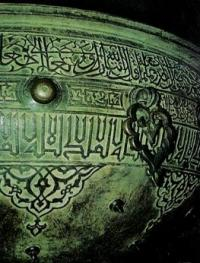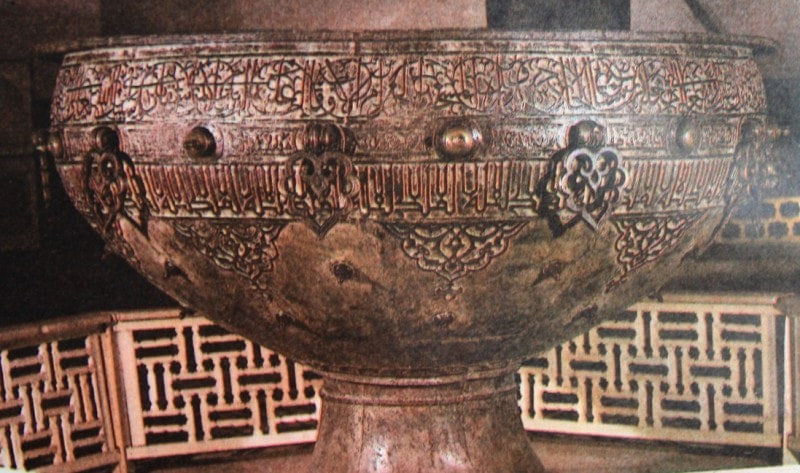A 600-year-old cauldron replica will be featured in the exhibition of the Center of Islamic Civilization
 The Mausoleum of Khoja Ahmad Yasawi, located in the city of Turkestan in the Republic of Kazakhstan, is remarkable not only for its architectural perfection but also for the historical, cultural, and spiritual treasures it preserves. Among these treasures, one of the most notable, monumental, and symbolic objects is the large bronze cauldron, known as the doshqozon.
The Mausoleum of Khoja Ahmad Yasawi, located in the city of Turkestan in the Republic of Kazakhstan, is remarkable not only for its architectural perfection but also for the historical, cultural, and spiritual treasures it preserves. Among these treasures, one of the most notable, monumental, and symbolic objects is the large bronze cauldron, known as the doshqozon.
The cauldron was created on June 25, 1399 (20 Shawwal, 801 AH) by the order of Amir Timur. This information is precisely recorded in the epigraphic inscription on its body. The cauldron is regarded not only as a vivid example of practical metalworking art but also as a symbol of the fusion of Islamic faith, Sufi traditions, and cultural processes of the Timurid era.
The cauldron is 1.62 meters high, 2.42 meters in diameter, and has the capacity to hold up to 3,000 liters of water, with an estimated weight of about 2 tons. These features make it one of the largest bronze vessels in Central Asia.
The artifact bears the phrase “May it be blessed” written in Persian ten times, and the Arabic phrase “Power belongs to Allah” inscribed twenty-two times in Kufic script. On the upper band are quotations from the Qur’an and Hadith, along with Amir Timur’s decree and the cauldron’s date of creation.
On Fridays, sweet water from the cauldron was distributed among the people as charity. This practice symbolized, in Sufi tradition, the idea that all people partake of blessings from a single vessel. According to legends, the cauldron was highly esteemed by nomadic communities, as it was used to prepare communal meals, embodying the concepts of unity and generosity.

A 600-year-old replica of this cauldron is expected to be featured in the exhibition of the Center of Islamic Civilization.
Most read

Over 100 experts from more than 20 countries of the world are in Tashkent!

President of Serbia Aleksandar Vučić visited the Islamic Civilization Center in Uzbekistan

The Center for Islamic Civilization – a global platform leading towards enlightenment











